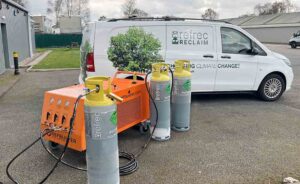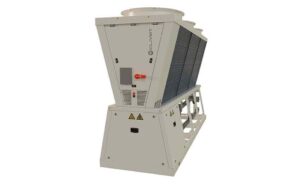Comprehensive view of Australian market
14th November 2018AUSTRALIA: The Australian government has produced what is described as the most comprehensive inventory yet produced of the Australian HVACR sector.
Produced by the Department of the Environment and Energy, Cold Hard Facts 3 presents nationwide figures for HVAC&R equipment, refrigerant, energy consumption and emissions.
The report aims to provide policy makers, industry, and the general public with a broad view of the industry’s size and value. The Cold Hard Facts reports also establish benchmarks that can be used in the future as reference points against which to measure growth and change.
“Cold Hard Facts really is an example of Australia leading the world,” said Tony Gleeson, CEO of the Australian Institute of Refrigeration, Air Conditioning and Heating (AIRAH). “Other countries would dearly love to have such a complete inventory of their HVAC&R industries, especially given the fragmented nature of our sector and the way it crosses over so many others.
“Importantly, Cold Hard Facts 3 gives us the big numbers that a general audience can understand: how many people HVAC&R employs, how much money it represents to our economy, and what it means in terms of energy use and emissions. These facts and figures are vital for raising the profile of the industry and having our voice heard.”
Based on data up to 2016, Cold Hard Facts 3 confirms the continued growth of Australia’s HVAC&R sector – ahead of population growth and GDP – and points to some key trends.
Employment in the Australian HVAC&R sector rose from 173,000 in 2012 (1.5% of 11.53m) to 298,400 (2.5% of 12.47m). These individuals are employed in more than 20,000 businesses operating in the industry and earned about AUS$24bn (€38.3bn) in wages and salaries in 2016.
Direct spending – on purchasing, installing, maintaining and operating RAC equipment – rose from $26.2bn (€16.7bn) in 2012 to $38.11bn (€24.3bn) in 2016. The stock of equipment rose from 45m to 50m pieces. Of special note was the increase in the walk-in coolroom sector – up 265% from 98,100 to 258,000.
This equipment, ranging from small portable refrigerators and air conditioners to large commercial chillers and refrigeration plants, employs a bank of more than 50,000 tonnes of synthetic refrigerants. The bank of refrigerant has an estimated current replacement value of around $2.7bn (€1.72bn).
Nearly 5,400 tonnes of low GWP refrigerants are also found working in major refrigeration plants, mostly in cold storage distribution facilities, in more than 740,000 registered road vehicles, in an increasing number of supermarket refrigeration systems and in millions of domestic refrigerators.
Electricity use rose slightly, from 59,000GWh (23.5% of total energy consumption of 251,000GWh) to 61,000GWh (23.6% of 258,000 GWh). The report notes that RAC technology in all its forms is the single largest electricity-consuming class of technology in Australia. This, combined with leaks from the significant bank of high GWP refrigerants employed, places RAC equipment as one of the largest sources of greenhouse gas emissions in Australia.
Total indirect greenhouse gas emissions from electricity consumption by RAC are estimated to be 58.7MtCO2e per annum, equivalent to 10.9% of Australian national greenhouse emissions in 2016. Annual losses of HCFC and HFC refrigerants directly to air from operating RAC systems are calculated to be equal to another 6.4 million tonnes CO2. A further 3.6MtCO2e of refrigerants are lost annually from equipment retired at the end of its useful life. The resulting total direct and EOL emissions of HCFCs and HFCs in Australia in 2016 equates to 10MtCO2e.
The report can be read and downloaded here.








